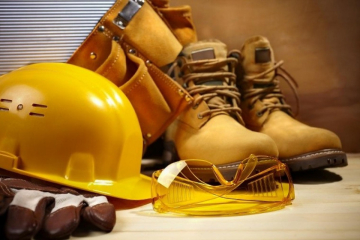Much to your surprise, you have suddenly become the new plant safety person. And on top of that, you have little or no background in safety! Unfortunately with downsizing/right-sizing and budget cuts, this kind of move has become increasingly common at the plant level, despite the importance of EHS to the operation.
Instead of thinking you were in the wrong place at the right time, think of this as an opportunity—as actually being in the right place at the right time. Rather than feeling overwhelmed with your new job title and associated tasks, you can start working your way towards becoming a well-informed, knowledgeable safety person by following some simple steps.
Don't Worry--We'll Walk You Through It
This is the first of a series of blog posts that will set out a simple road map to assist you in becoming the knowledgeable and informed safety person that the plant has needed for a long time! Each piece will highlight important requirements with which you should become acquainted. Even if you are already a seasoned safety person, you may pick up on some things that you have forgotten.
Let’s Start at the Very Beginning
The most important step of becoming the new plant safety person is to understand your role. You may or may not have been provided a job description when you were identified as the plant safety person. In general, the basic safety requirements are the same no matter the size of your manufacturing facility.
Understanding your roles and responsibilities is of paramount importance and is a good place to start in understanding what is expected of you. Responsibilities may vary depending on the organization; however, your overarching goal is to create a safe working environment that is free from recognized hazards.
Some of your responsibilities may include (but are not limited to):
- Examining workplace conditions to make sure they conform to applicable OSHA standards.
- Establishing or updating operating procedures and communicating them so that employees follow safety and health requirements.
- Assessing education and training needs, and evaluating and recommending appropriate safety programs to ensure employees are provided with the best possible training and education in order to perform their jobs safely. Providing the safety training in a language and vocabulary workers can understand is crucial.
- Conducting accident investigations to ensure the root cause is identified and corrected to prevent a recurrence.
- Developing and implementing written programs as required by OSHA standards, and training employees on the contents of the written programs.
- Keeping records of work-related injuries and illnesses using the appropriate OSHA forms and complying with posting requirements.
- Analyzing plant injury/illness data to determine trends and implementing corrective action to reduce the number of injuries/illnesses.
- Making sure employees have and use safe tools and equipment and ensuring the equipment is properly maintained.
A complete list of Employer Responsibilities as defined by OSHA can be found on their website. Also, check with your corporate office to gain an understanding of company-specific objectives that may be important to your role.
Use What (and Who) You Know
Keep in mind, you do not have to go it alone! Recognize that the same management principles and practices that you applied to plant production, operating costs, and quality systems also apply to safety. For instance, where supervisors enforce operating rules, they also enforce safety rules; where they solve production problems, they can assist in solving safety problems; quality issues may also identify safety issues, and so on.
As you move forward in your new role, try not to feel overwhelmed with your responsibilities. Start with the basics, remember there are resources (like this one) to help you achieve success, and most of all, don’t be afraid to ask questions.
Download our complete guide for new plant safety managers here.
Want more news and insights like this?
Sign up for our monthly e-newsletter, The New Leaf. Our goal is to keep you updated, educated and even a bit entertained as it relates to all things EHS and sustainability.
Get e-Newsletter


